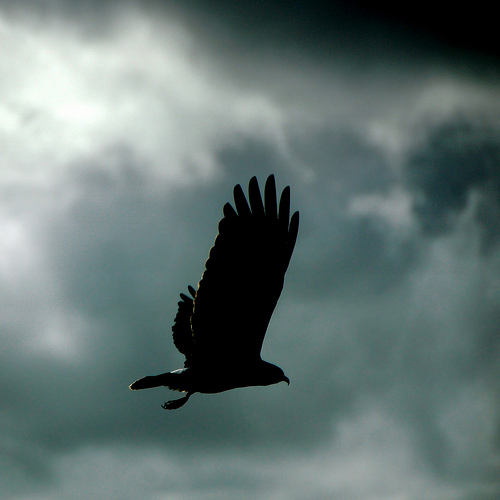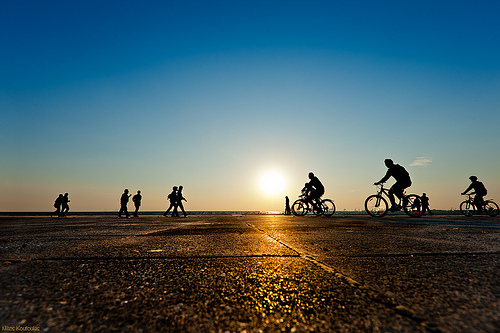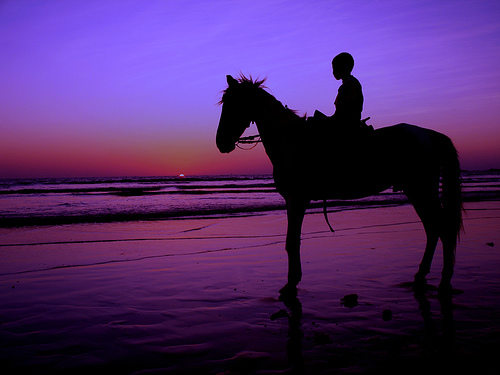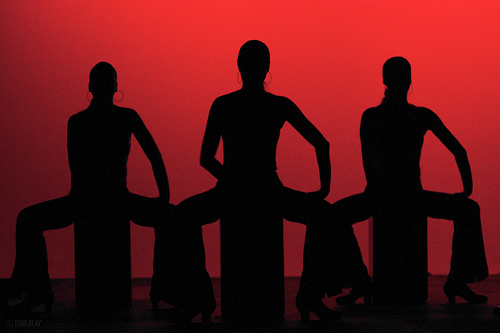
Silhouette is an excellent option for exploring the creative side of photography. Silhouette photography paves way for creating interesting and arresting images. A silhouette is a view of an object or scene consisting of the outline and a featureless interior, with the silhouetted object usually being black. Be it natural light or studio lighting the basic principle for creating amazing silhouettes is the co-ordination of the two principle tones — black (silhouetted object) and the light background.
The silhouetted images are simply compelling. These images convey drama, mystery, emotion and mood. The hidden details of the subject makes room for imagination on the part of the viewers thus resulting in the visually intriguing images. While it is not about color, details, textures or patterns, it strongly and distinctly highlights the strong contrast that prevails between the scene and the silhouetted subject. And here are 6 quick and simple tips to get ready for shooting some amazing silhouette shots.
-
Choose The Subject Carefully
The two most important elements of silhouette photography are, first the subject and second the arrangement of light. But before diving into the technical details, you have to carefully choose the subject to show off distinctly as a silhouette. The emphasis here is on the shape of the subject and not the finer details like colors, tones or textures.

-
Get The Light Right
The strong backlight is the essence of the silhouette photography. The light shining from the background underexposes and darkens the subject. If shooting in the auto-mode don’t forget to turn off the camera flash; as you want to avoid any light from the front. You can easily get some good silhouette shots by placing the subject in between the camera and the sun as the source of light or any other light for that purpose.

-
Let Everything Be In Focus
Take a look at few examples of silhouette photography. The silhouette images generally have everything in focus — everything is focus right from the foreground to the background with crisp, sharp outline of the subject arresting the viewers attention. Turn on the aperture priority mode or go manual to set a higher f-number for capturing a high or wider depth of field.

-
Composition Tips
Composition is at the heart of the art. This applies to silhouette photography as well. While the aesthetics of the subject is not the subject of matter here, what really matters is how you frame the subject. Here is the quick wrap of the composition tips for creating silhouette images:
- Bright background: The bright background perfectly compliments the darkened subject. You can use the backlight to your advantage to give glowing effect as well.
- Interesting shapes: You can photograph the portraits, birds, wildlife, water-boat or just about anything that conveys its identity even after stripping off the details and nearly all perception of depth from the subject. What really matter is the appealing shape of the subject like curved architecture of a building or curvy posture of the dancer.
- Hide the source of light: Play around with the backlighting to get some amazing effects. Hiding the source of light for instance compliments the subject with the glowing effect while darkening the edges of the frame which ultimately pulls the viewers attention towards the center of the frame.
- Distinct / Uncluttered Shapes: When you are planning to include more than one subject in the frame, it is better to closely observe the scene. The subjects should not overlap each other as this may merge the shapes and leave the viewers confused about the subject and the shape.
-
Wait For The Perfect Time — The Sunset [Or Twilight]
Mostly silhouette photographers love to shoot during the sunset. The sun is at its brightest at this point of time and provide a perfect lighting set-up for a greater contrast between the subject and glowing sky. You can merge multiple techniques like creating sun-stars, including magical clouds and hues in the sky in the frame or capturing the sun’s reflection in the waters during the sunsets for dramatic effects.

-
Practice The Silhouette Shots
Last but not the least, just like any other form of the art, the mantra for excelling at silhouette photography is practice, practice, practice. Learn more by exploring the camera settings and experimenting with composition. Bracket the shots or try silhouetting the partial scene for creative results.

Also, check out the silhouette photography examples for inspiration and don’t forget to share your shots with us.



Wow! There’s so much more to silhouette photography than I realised.
Thanks for posting.
I can’t wait to try these tips. Thank you for helping amateurs like me get a better shot at things ;) Keep rockin’!